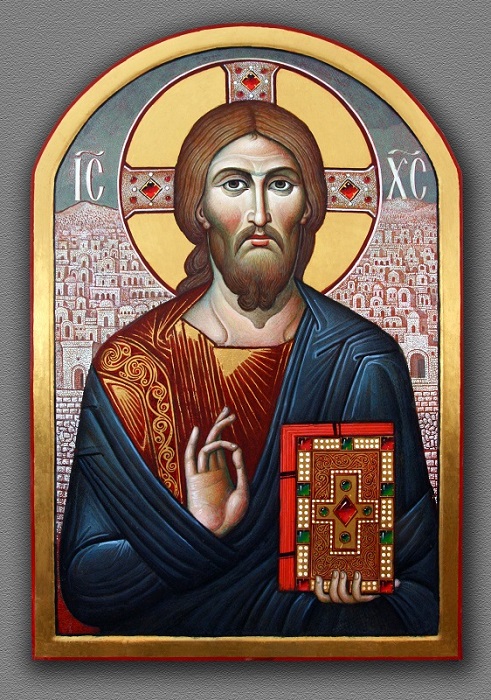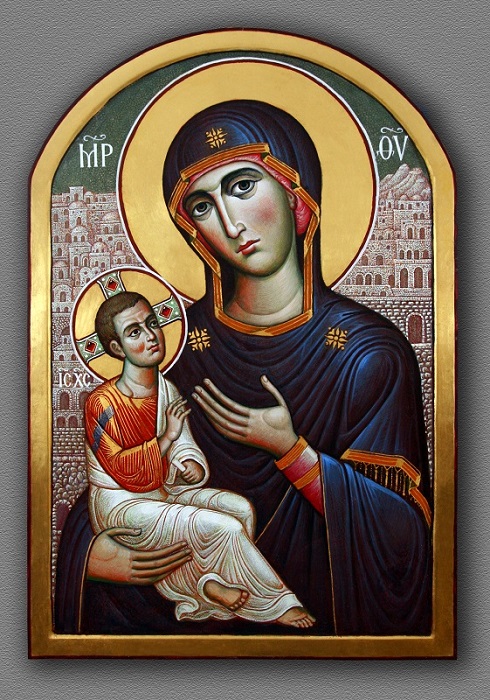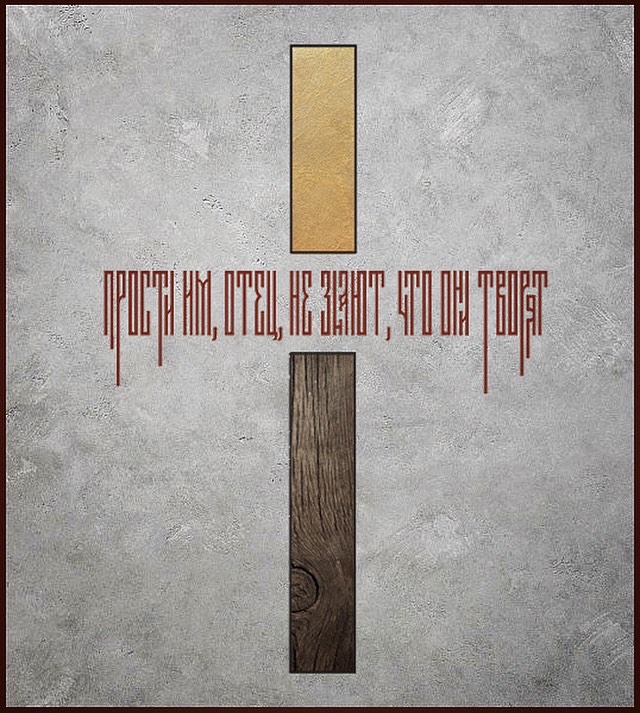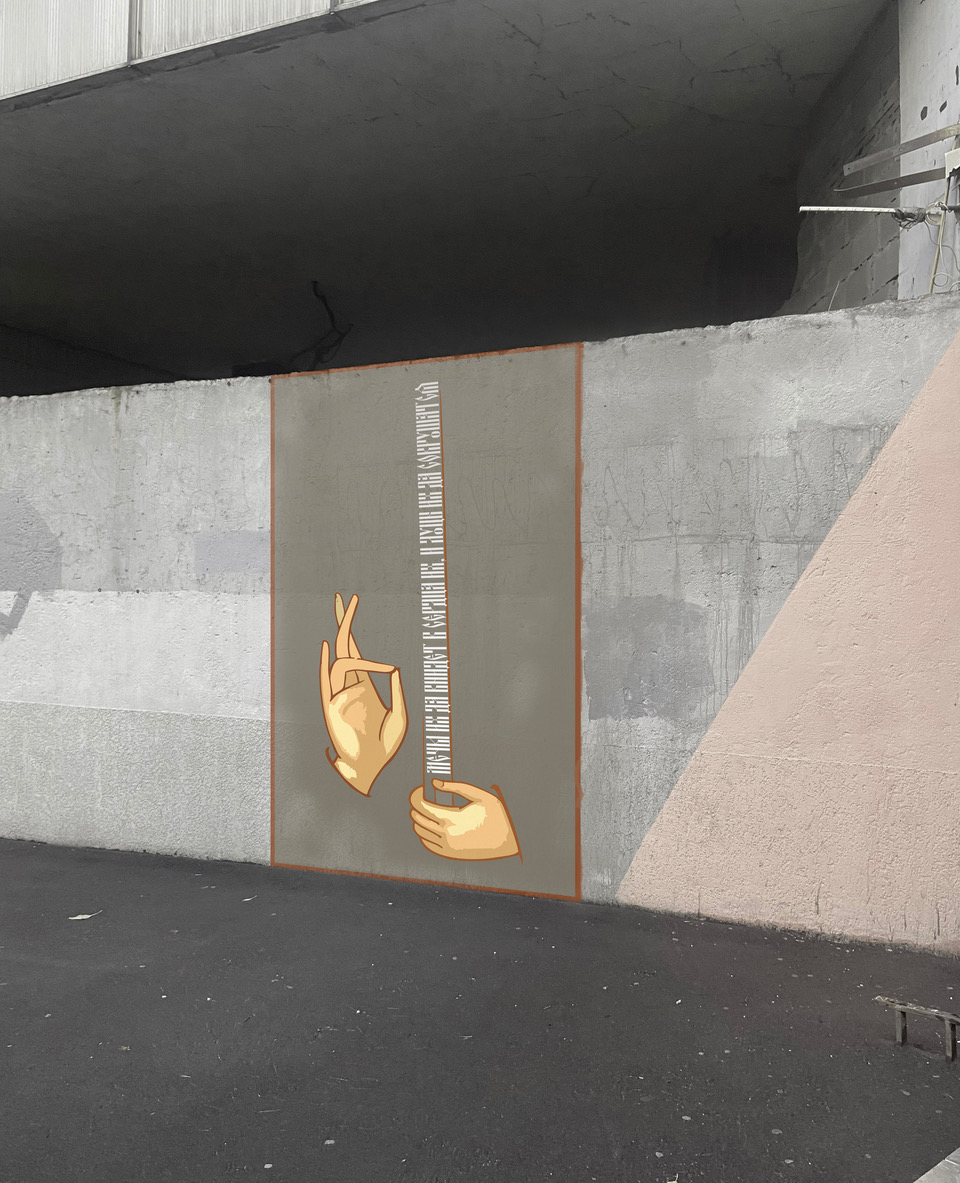Russia’s 1st Biennale of Christ-centered Art 2021
Russia’s 1st Biennale of Christ-centered Art

An opportunity of dialogue between the church and contemporary art
by Viktor Barashkov
The First Biennale of Christ-centered Art took place in Moscow from March 14 to June 13 this year (2021). For the Russian cultural sector this was a notable event, though we can name the exhibitions Dvoeslovie/Dialogue (2010), Art and religion in the space of modern culture (2013) and Gifts (2013) as its predecessors. The jury members of the Biennale (chairman – Hilarion Metropolitan of Volokolamsk) chose about 150 works of 67 artists that were exhibited on the territory of the Patriarchal Chernigov Metochion. The intention was to create a dialogue between works of church art and contemporary artworks of a wide range of artists.
For the Orthodox culture the meaning of sacred images (icons) is as vivid as ever. Nevertheless, it is important to find new approaches in the dialogue of icons with believers of the 20th and 21st centuries. High artistic quality and the artist's personal approach to the icon are now deemed of equal importance. Hence the term author’s icon was proposed by the Russian art critic Irina Yazykova in 2015. This term points to the difference between the rendition of an icon by one master and another, which means that the icon can be made in a personal manner, a unique artistic style and can be based on the author’s own interpretation of the image.
The Russian Orthodox Church doesn’t exclude any artistic means for the aim of communicating a Christian message to the world: “Any creative style is suitable for speaking about Christ, if the artist's intention is sincerely pious and if he remains faithful to the Lord” (Bases of the Social Concept of the Russian Orthodox Church, 2000).
Curator of this Biennale artist Gor Chahal proposed a concept that builds on the similarity of art to the preaching of the Christian message: Christ-centered art. He believes that the unifying center should be Christ, the Savior of the World, who sets the direction of the development of the creative personality. This term can cover several concentric circles of the sacred creativity of contemporary artists, related to each other and complementing each other: 1. the circle of liturgical, canonical church art; 2. non-canonical or secular contemporary art (speaks about Christian issues in a modern artistic language); 3. the art that is indirectly connected with Christianity, which is close to it in spirit and worldview.
In the exhibition the following themes can be distinguished: the author's icon; interpretations of events from the life of Christ; interpretations of the gospel message in the contemporary public space; the transfer of the principles of icon painting (reverse perspective, motifs, colors, composition) into modern painting; comprehending the nature of sacred spaces; the theme of divine (Tabor) light; comprehending the experience of Christian prayer and spiritual virtues. In general the emphasis was on the theme of God and on the human spiritual development towards God.
On the ArtWay you can read about the works of artists Albert Soltanov and Elena Cherkasova, represented on the Biennale.

One of the most monumental works was Power by Dudya Sarabyanov. With a size of 230 by 330 cm it carries a great semantic load. This work was inspired by the artist’s trip to Mount Athos (important centre of Eastern Orthodox monasticism). It symbolizes the power of the prayers of the monks and the sacred atmosphere of the place.

Important for the biennale was the installation They prostrated themselves… (Gospel of Matthew, 17:6) by sculptor Anatoly Komelin. The installation represents through the image of the prostrate apostles an earthly aspect of the gospel narrative about the Transfiguration of the Lord. The installation was placed in the basement of the church, so it could symbolize both the Transfiguration of Lord and the Resurrection of the Lord.
 |
 |
The Biennale also was a competition. There were three nominations: Grand Prix, The Best Young Artist, and the People's Choice Award. The Grand Prix was won by icon-painter Alexander Chashkin. There were two of his works at the Biennale: Savior and Our Lady of Strength (both 2010). It makes sense that the author of the images of Christ and the Mother of God won this prize.
 |
 |
The prize for the best young artist was received by Olga Shumova for the photos of street art: Forgive them, Father, they do not know what they are doing and Let their sword enter into their hearts, and let their hearts be broken. Concise visual language, the combination of images (cross, sword) and words, so characteristic for street art, give these works their strength. They are understandable to the modern viewer accustomed to minimalism.
|
The People's Choice Award was won by Elena Ferizba for the works Apostle Peter and Where do you go, O Lord? As written in the exhibition catalog, “The texture of the work, the cracks and scuffs – these are references to ancient frescoes, conveying the idea of the powerlessness of time over the eternal.”
One of the jury members, art historian Alexei Lidov, talked about the priority of spiritual meaning in relation to any form of embodiment, which can be a traditional icon, a performance, or a multimedia installation. This concept of hieroplastia was proposed in the 5th century AD by the theologian who called himself Dionysius the Areopagite. According to Lidov hieroplastia should be perceived as a basic value in the reviving of sacred art in modern culture.
*******
1. Dudya Sarabyanov (b. 1980), Power, 2020, paper, water-based paints, 230 × 330 cm.
2. Anatoly Komelin (b. 1953), They prostrated themselves…, 2020, installation, variable dimensions.
3. Alexander Chashkin (b. 1946), Saviour, 2010, egg tempera, drying oil, gilt, 90 × 60 cm.
4. Alexander Chashkin (b. 1946), Our Lady of Strength, 2010, egg tempera, drying oil, gilding, 90 × 60 cm.
5. Olga Shumova (b. 1993), Forgive them, Father, they do not know what they are doing, 2020, photo, gilding, 100 × 110 cm.
6. Olga Shumova (b. 1993), Let their sword enter into their hearts, and let their hearts be broken, 2020, photo, 150 × 100 cm.
7. Elena Ferizba (b. 1982), Apostle Peter, 2020, hardboard, mixed media: putty, sauce, sanguine, acrylic, 61 × 61 cm.
8. Elena Ferizba (b. 1982), Where do you go, O Lord?, 2020, hardboard, mixed media: putty, sauce, sanguine, acrylic, 61 × 61 cm.
There is now a catalogue of all works presented on Biennale with parallel text in English. For more information and images, see https://christ-art.ru/en/.
Viktor Barashkov is a Russian philosopher and art historian. He is Assistant Professor at the Department of Philosophy and Religious Studies of Stoletovs’ Vladimir State University. The main fields of his interest are contemporary religious art and architecture, philosophy of culture and anthropology of religion. He is a member of the Russian National Section of International Association of Art Critics (AICA).



.jpg)
